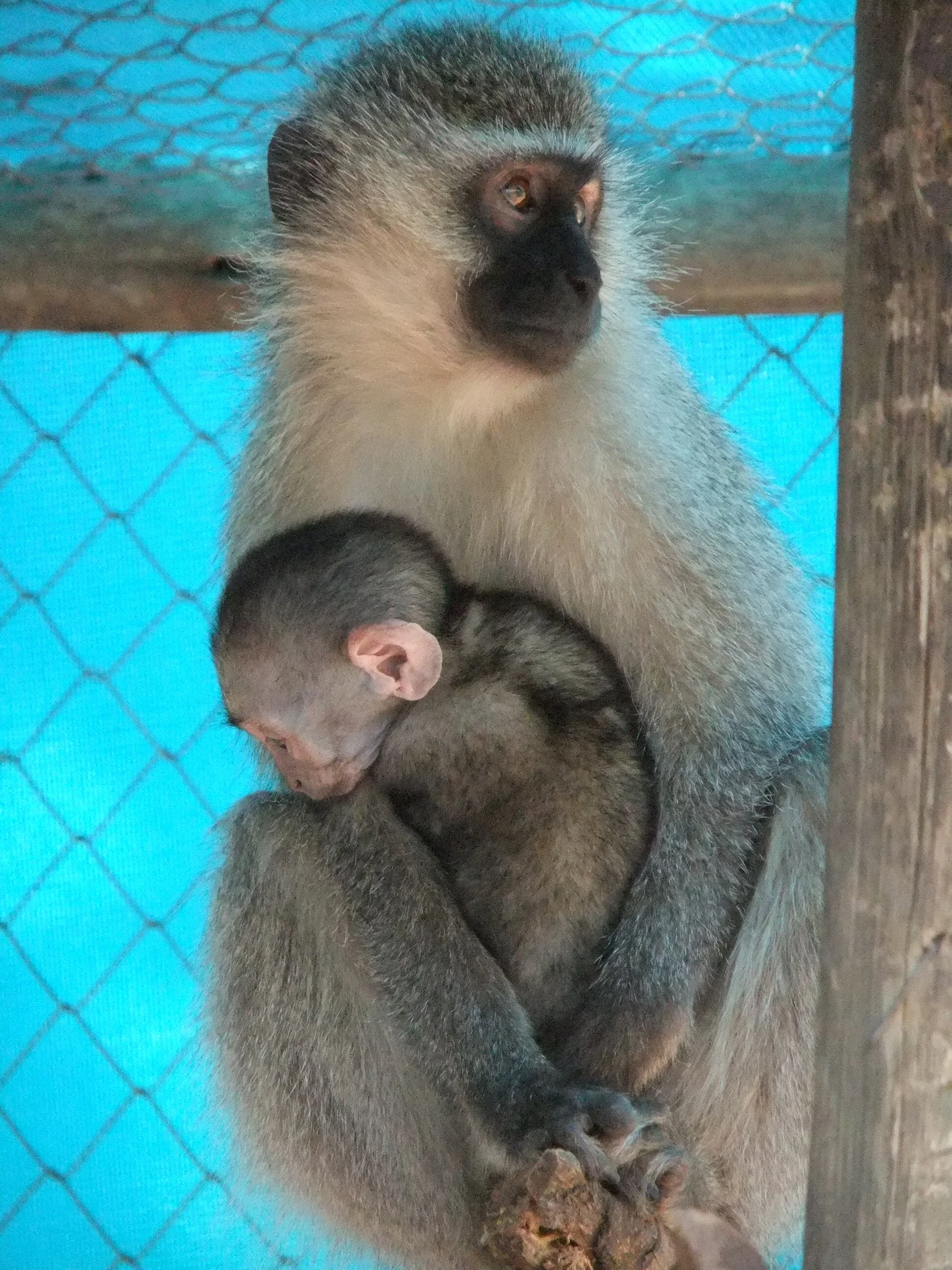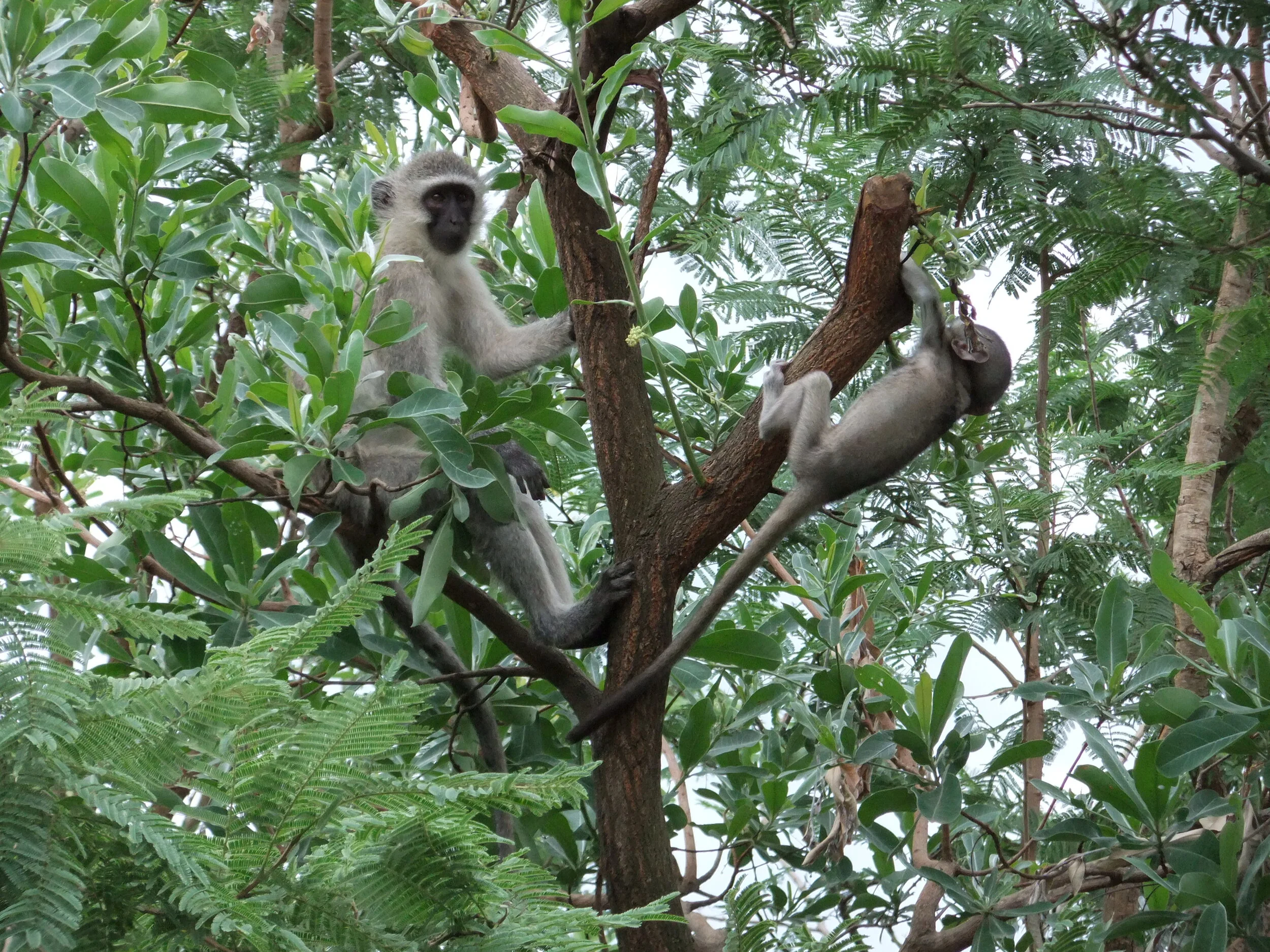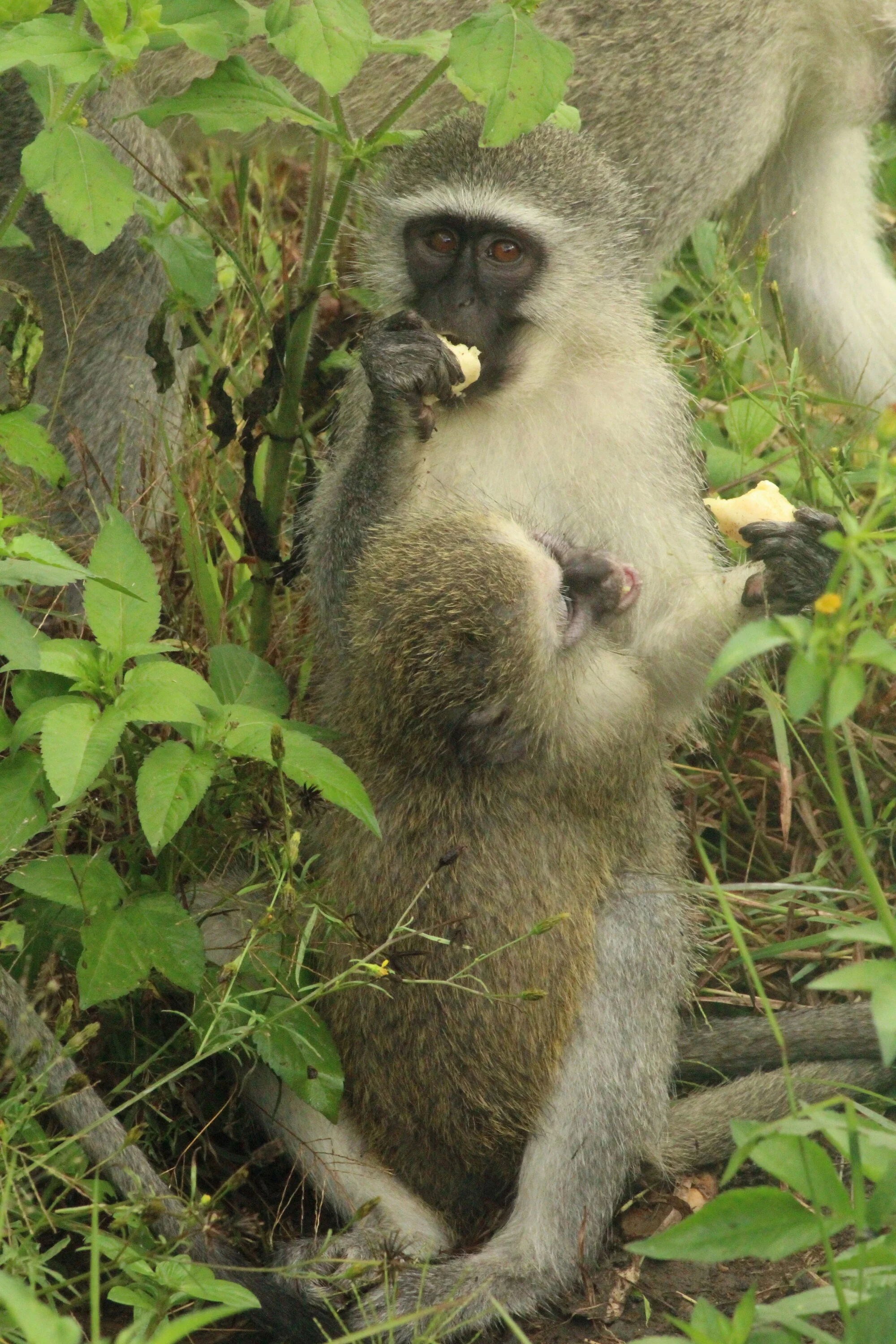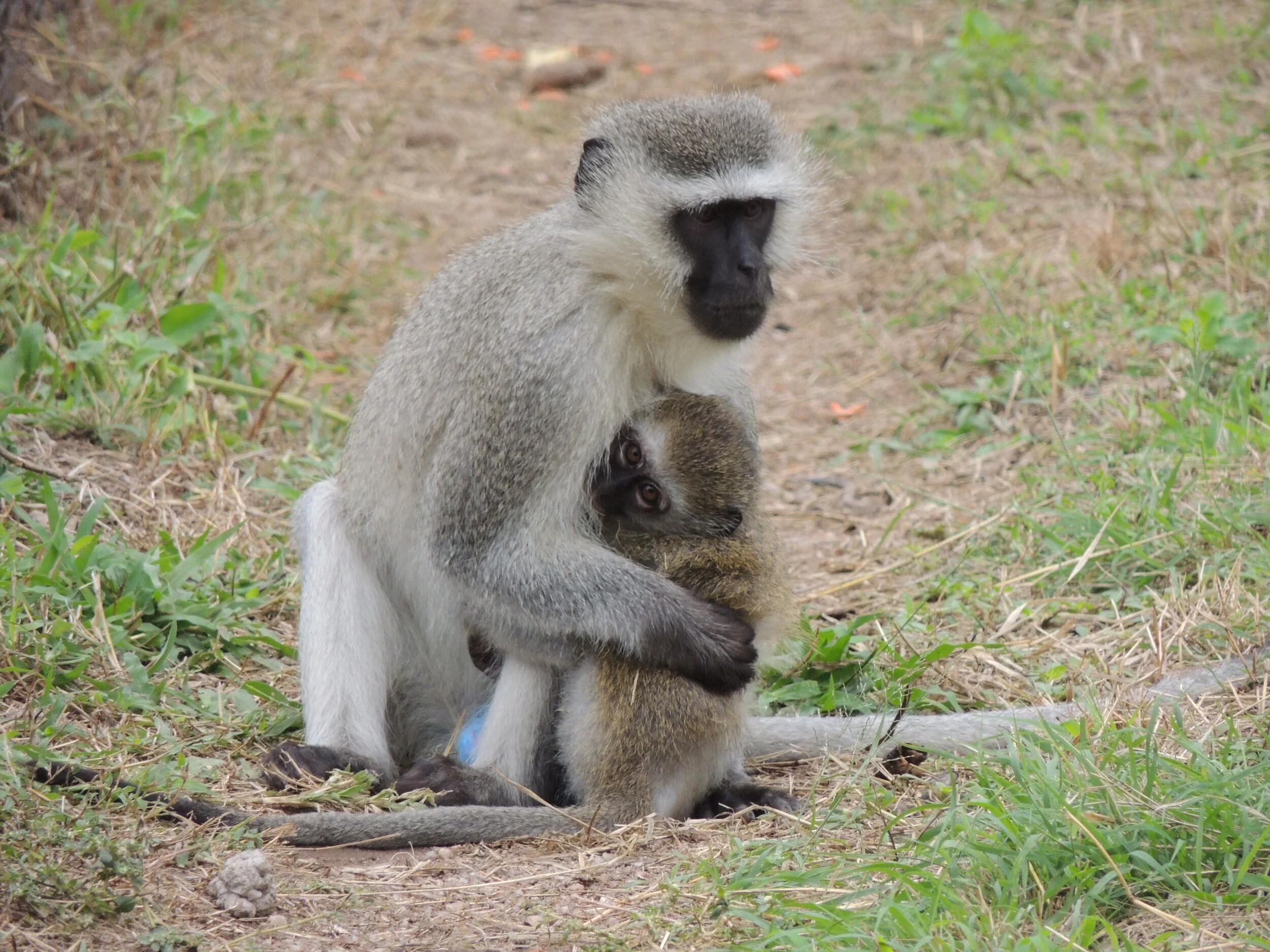Foster monkey moms: A second chance for orphans – Part II
The Vervet Monkey Foundation (VMF) evaluates which troop might be the best match for a new orphan. Factors include troop size, male:female ratio, enclosure capacity, the orphan’s age and sex (some troops are more interested in younger infants, others prefer older), etc. They also assess, depending on the orphan’s behavior; for example, how independent they are or if they’re in need of a foster mom who will bond with them very closely if they’ve suffered excessive trauma.
Troops are housed in huge semi-wild enclosures, to which is attached one or more small introduction enclosures, and connected via small-scale doors controlled by staff. When the orphan is more settled in, eating solids and adept at the feeding cage (ideally around five weeks old), caregivers bring the orphan(s) to visit the chosen troop. From outside the intro enclosure they meet individual troop members safely through the fence and the VMF team can see which female(s) show most interest in the infant, before actual introductions commence. Ayla and Spiegel were two of the first infants in the fostering program, and adult females Chico and Pippa were most eager to take on a baby.
Ayla meets potential foster mom Chico. Photo: Robin Huffman
After several daily visits, now comes the orphan’s (or two or three orphans’) first days actually inside a troop’s intro enclosure, accompanied by their caregivers. When it’s time to begin selectively letting troop members enter, caregivers exit. Vervet infants have a particularly heart-wrenching cry for their mother. If their waiflike presence alone doesn’t compel curious female adult vervets to investigate, this cry surely does!
One or two at a time, females and selected juvenile males are allowed in to interact with the orphan(s), but not adult males, who typically interact very little with babies. Close attention is paid to personalities. Two adversarial females could cause a conflict, fighting over a baby. And alpha females get limited access. Not only does their high-rank status demand their presence to resolve issues within the troop, but also during an introduction they might assert unwanted dominance over a lower-ranking female who’s bonding with an orphan (although much later in the foster mom process, a higher-ranking female might co-opt the baby for herself).
Once a female has really displayed mothering instincts with a baby, they remain together in the intro enclosure until the infant’s about three months old (which may be up to six weeks). Selected troop members will be let in and out. And Foster Mom will occasionally take a short break in the large enclosure but then return. For lucky Ayla and her pal Spiegel, Pippa and Chico respectively did turn out become their foster moms. This means they had a second chance to be nurtured by a mother figure which humans had taken away from them.
Orphan Ayla held in the arms of Foster Mom Pippa. Photo: Robin Huffman
Orphan Spiegel and his Foster Mom Chico. Photo: Robin Huffman
Once an orphan is bonded with their foster mom and has made friends with visiting troop members, it’s time to fully integrate. Three months of age is ideal for this phase. For wild vervets, this is when infants begin to leave their mothers to explore, and mothers are willing to let them (not unlike a mom and her child’s first day of school). For hand-raised orphans like Ayla and Spiegel, this benchmark is even more important, because it means they’ll be bold enough to scamper over to a feeding cage for milk, and their foster moms will let them. Vervet babies drink milk until they’re about a year old.
Spiegel playing in the enclosure while foster mom Chico looks on. Photo: Robin Huffman
One thing I found so endearing and amusing to observe. Some vervet females don’t want a full-time foster mom role, but they like being auntie and “borrowing” a baby for a few hours, often while Foster Mom takes a break nearby.
Female grooming Foster Mom Chico in hopes of "borrowing" Spiegel. Photo: Robin Huffman
And orphans who’ve been fostered often grow up to become foster moms themselves, like Keksie here (who I cared for—and painted—as an infant), with Gizmo.
Adult Keksie with orphan Gizmo. Photo: Matt Akister
A perfect example of paying it forward. Bravo for foster mothers!
Painting of Ayla, 9x12 acrylic on Gessobord, by Robin Huffman
Painting of Keksie, 48x48 acrylic on canvas, by Robin Huffman
Monkey foster dads?
Jethro (dad) and Rox (son). Photo: Vervet Monkey Foundation
“Yes, Jethro and Rox are our foster dad and son couple. Rox arrived as a severely injured baby in January this year after he was hit by a car. It is in fact extremely rare; as far as I know, we only had one case of this intense care by a male before. Jethro is doing everything a foster mum does. He carries, grooms and protects Rox, as well as sleeps together in the trees at nighttime.” - Vervet Monkey Foundation









